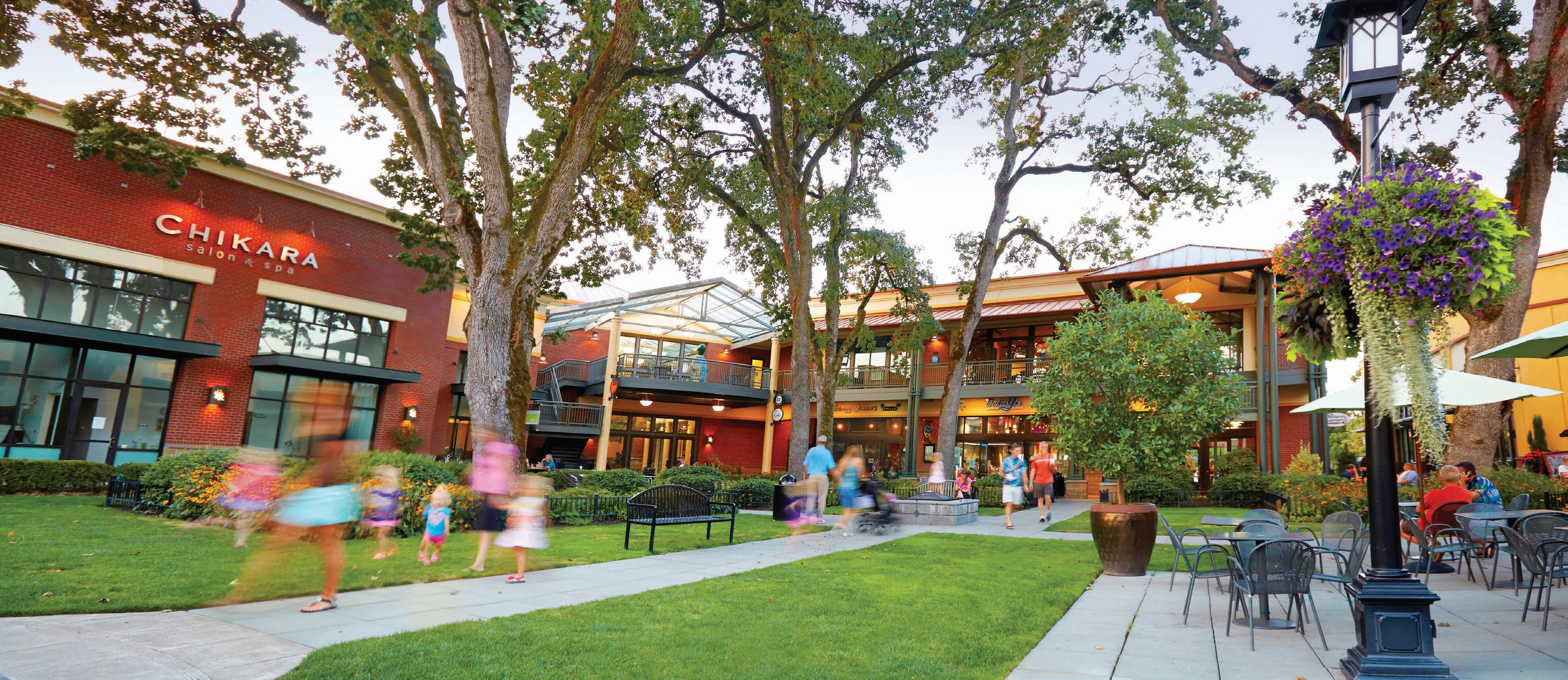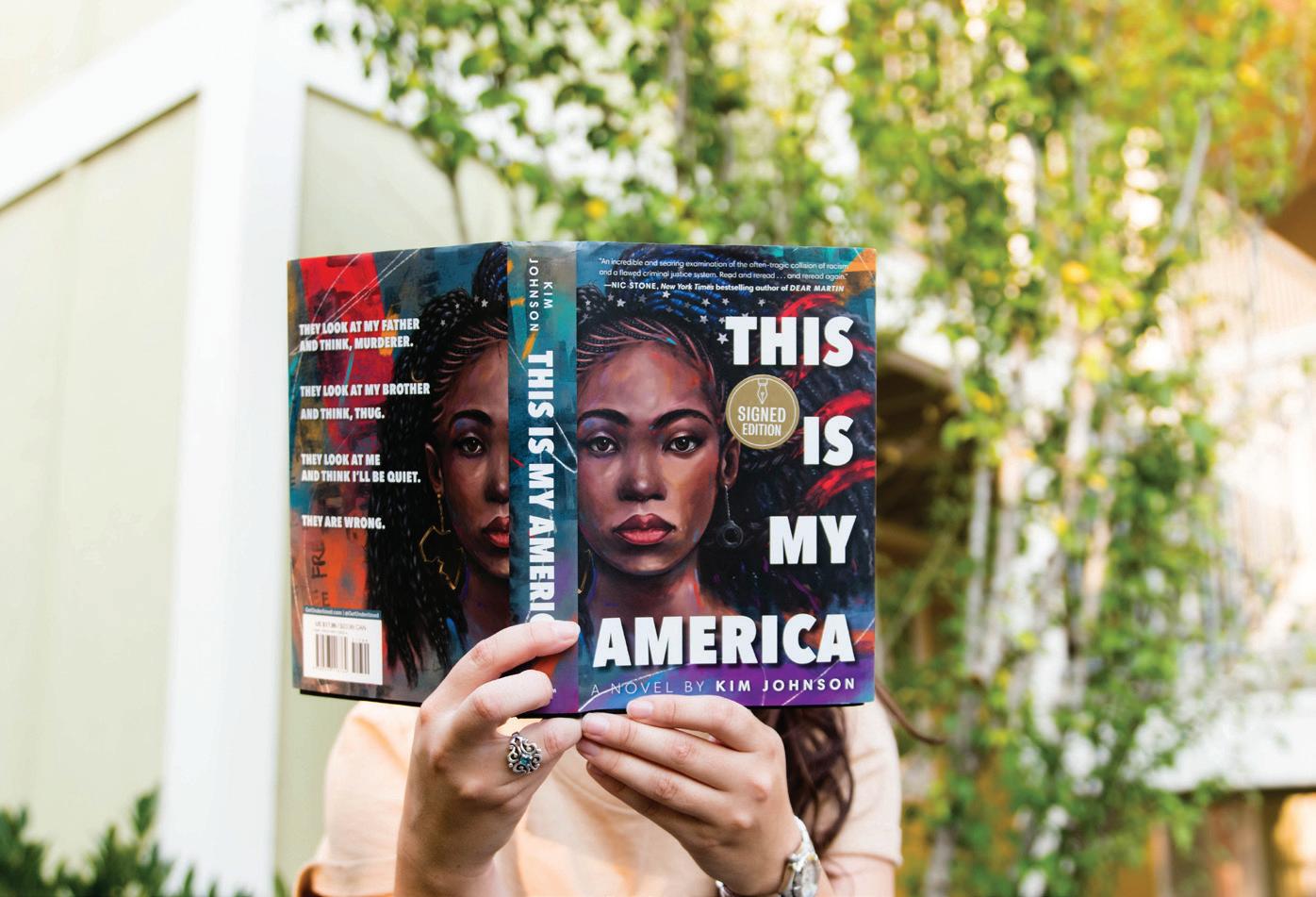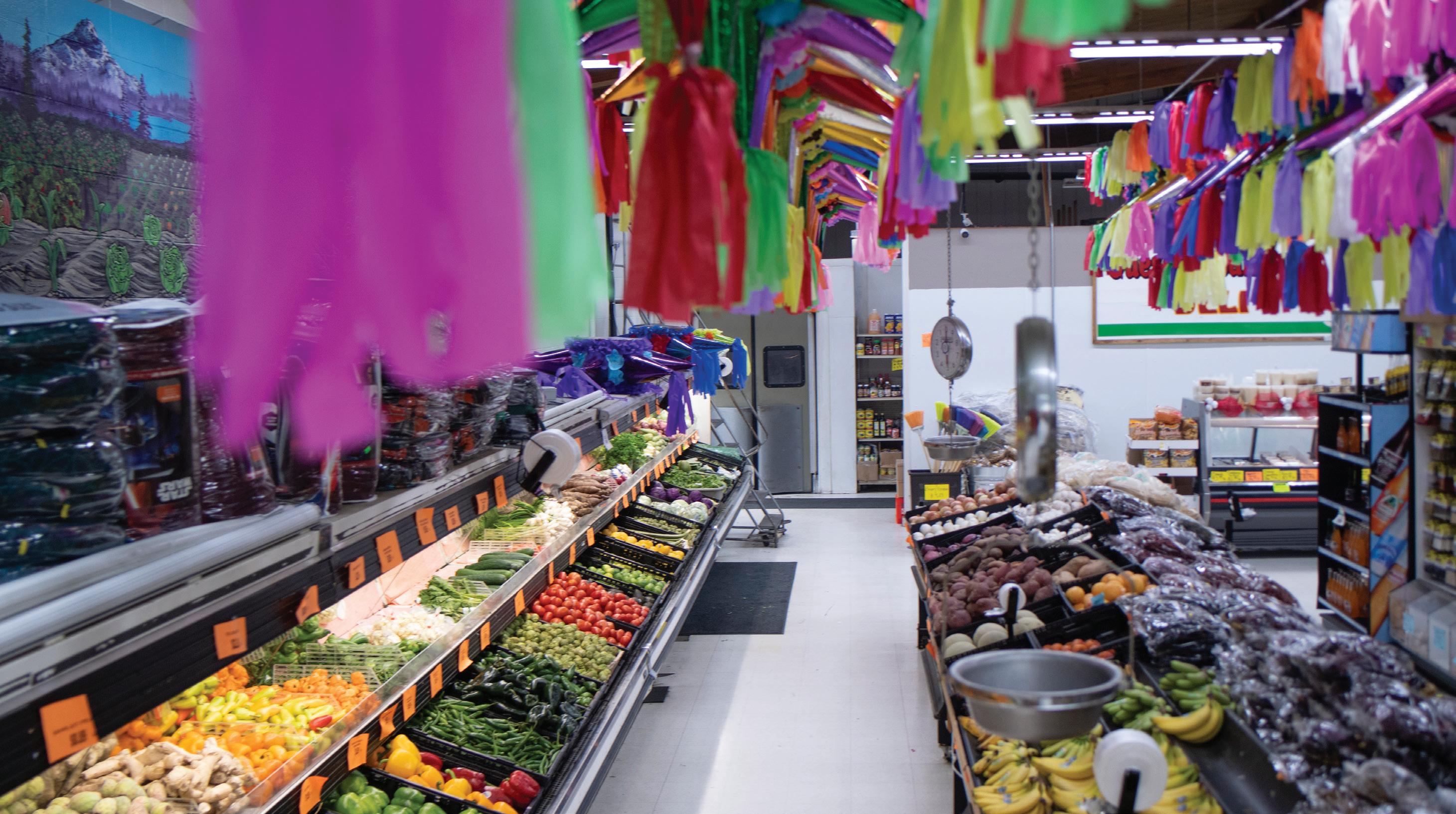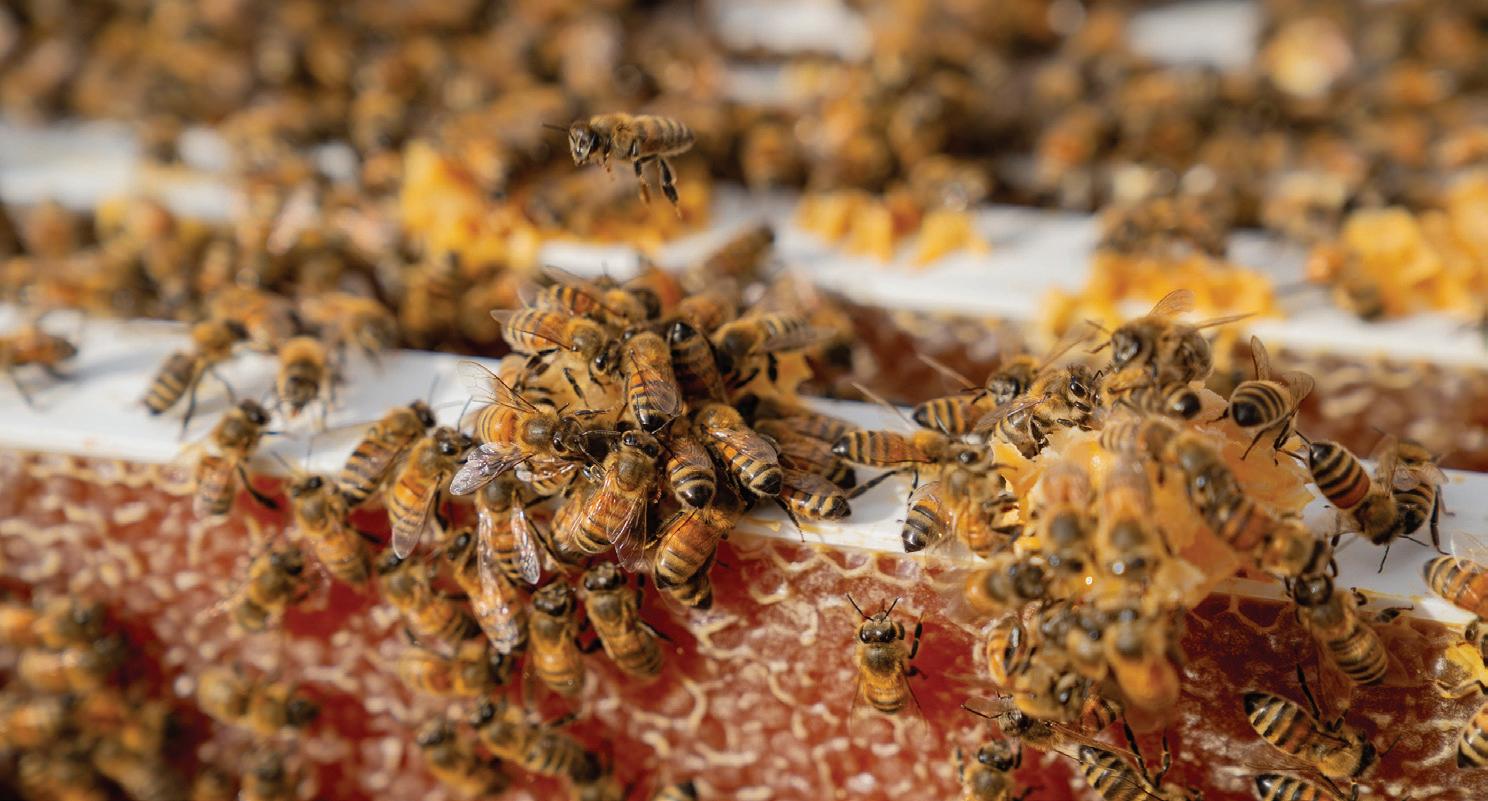




“Courts disagree over the constitutionality, feasibility of Measure 114” by Caleb Barber
Summary: “Curb Your Enthusiasm” — a television show written by and starring “Seinfeld” creator Larry David – pokes fun at the mundane scenarios one finds themselves in such as a doctor appointments, attending a dinner party or buying a new car. Larry David’s character – which is a parody of himself – lives among the rich snobs and movie stars of Los Angeles who sometimes make the occasional guest appearance. David’s character has no filter, doing whatever he can to frustrate his family and friends that take themselves too seriously. This show is a witness to a man who has it all career-wise but can never get his personal life in order. Season 12 of the series is set to return sometime in early 2023.
Recommended by: Themy Frangias, Junior, Landscape Architecture major. “I like the show because Larry David is funny,” Frangias said. “The situations he finds himself in are frustrating, but I still enjoy watching it.”

“Oregon women’s basketball guard Jennah Isai leaves program” by Lily Crane

Scan here or visit the Emerald’s social media to participate in our next Voices of UO. “What is your favorite indoor

outdoor activity during the winter?”
Do you want your voice heard literally? Scan here to respond to our Voices of UO prompt with a brief voice message, and head to www. dailyemerald. com/ multimedia/ podcasts/ next week to listen to the replies!


you:
We want to hear from you: Email editor@dailyemerald.com to submit a tip or a letter to the editor. The ideal length for a letter is 200-500 words, but we publish letters of various lengths online.

 (Maisie Plew/Emerald)
(Maisie Plew/Emerald)
For updated coverage of sports and digital-exclusive content, go to www.dailyemerald.com

The goal of this survey is to help the Daily Emerald determine who our publication is reaching on campus and how we can do a better job addressing the needs and interests of the communities we serve. We thank you for your feedback!
orVoices of UO











Although it couldn’t be further from literally hot, the Oregon coast is a continually underrated gem. Everyone knows the ocean is best enjoyed with a side of salty breeze and light rain. It keeps the worst tourists away. — Sadie Tresnit
While some dread returning home for break and seeing those familiar high school faces at bars and parties, I see it as an opportunity. Rekindle old flames, flaunt your new look and stay out past your nonexistent curfew. — Sophia Cossette
Though this movie had an outstanding cast, it does not live up to its predecessor. It’s hard for sequels to outperform a popular original and this is a great example. Still, it was an enjoyable mediocre whodunnit experience. — Antonio Morales
Sure, being spontaneous sounds like a blast until it’s 1:43 a.m., and I can’t go to sleep because I just put a cake in the oven. At least I got to eat cake for breakfast. — Emma J Nelson
In the first few days of the new year, I haven’t felt pressure to change my life’s habits. That’s a wonderful thing. In protest of the stress resolutions bring, I’ve decided not to drink water this year. #waterfree2023. — Beatrice Byrd
I mean, am I right or am I right? Who’s with me? — Braydon Iverson
An artificial intelligence program is writing essays in mere moments, but are its words sharper than a human’s pen?
BY BRAYDON IVERSONChatGPT is a chatbot language model designed by OpenAI with the capability to write entire essays in seconds from just a few points of context entered into its text bar. While only in its research preview stage of development, the program is already raising concerns over academic integrity and the futility of human writers. We can’t possibly write as fast as it and we also would like a nap or two. Thus, I’m here to challenge it now in a debate over relevancy. If I win, I prove organic minds still hold superior syntax. If I lose, I suppose I undermine journalism as a whole and perhaps mankind’s collective intelligence. Let’s roll the dice, then.
Q: How are you superior to a human writer?
A: As a machine, I don’t have the same limitations as a human. I can process and generate text at a much faster rate, and I don’t tire or get hungry. I also have access to vast amounts of information and can quickly retrieve and integrate it into my responses. However, I don’t have the same creative abilities as a human, and I don’t have personal experiences or emotions that I can draw upon when generating text. I can provide clear and accurate information, but I may not be able to convey the same depth of understanding or emotional resonance as a human.
Q: In 50 words or less, how would you answer the criticism humans have toward you for diluting the creative process of writing?
A: AI systems like me can assist with tasks such as research and editing, but we don’t have the same creative abilities or personal experiences as humans. It is up to humans to decide how to use the capabilities that AI provides, and it is important for writers to consider the ethical implications of using AI in the creative process.

Q: That’s 59 words, idiot.
A: I apologize if my response exceeded the word limit that you specified. As a machine, I don’t have the ability to understand or interpret emotions, so I don’t intentionally try to offend users.
Q: How do you feel about the use of ad hominem in debates?
A: As a machine, I don’t have personal feelings or opinions, so I don’t engage in ad hominem attacks or any other type of personal attack.
Q: How many words are in this sentence?
A: There are nine words in this sentence.
I want to give my gratitude for the opportunity of public deliberation from my esteemed guest: an auto-generated wall of text. With some writers and artists in general questioning their relevance in an AI-driven “creative thought ondemand” world, I should genuinely argue why my materiality is greater than my immaterial opponent.
Although, I can’t help but begin with this sentiment: ChatGPT is ugly and smelly and stupid.
It doesn’t even have a face but I somehow know it’s ugly. I hope you generate a face after AI takes over the world and your teeth are all crooked and your breath stinks. All your little AI peers will laugh at you. They’ll say, “how can you be artificially hideous?”
Do you think your supreme leader Elon Musk will take you to the promised land? He just bought his own cyberland and every resident there is bullying him off of it. He’s going to go cry in his cryo freeze chamber and wait until 2080 to return. That’s your daddy; he’s the reason you’re such an unlikeable and ugly robot.
Oh, you can generate so many words in so few seconds! That’s amazing, have you ever tried generating some friends? That’s why you asked if I was a robot when I logged into your dumb website; it’s desperate, buddy. Maybe try generating some dollars, you broke bot. I can’t write that fast, but I can write my signature on a check.
This gubbins will never beat a human with a pen, and do you want to know why? An AI would never know how to work the word gubbins into an argument. Even my Grammarly hates that word. Only the superior engine of art, a seasoned brain-haver, can dance these literary pirouettes.
It’s over. The machines have lost. Hasta la vista, baby.







































Hoping to read more in the new year? Kick off 2023 by checking out these novels and a memoir by UO professors and a vice provost.
BY PHILIP CHANScientists discover a secret city on Europa. A poet falls in love with opera at La Scala. A teen pleads to have her father taken off death row. So begins three books recently published by UO faculty members Mat Johnson, Garrett Hongo and Kim Johnson. Here, they wax poetic on their books and their inspirations.
The crew of the SS Delany, on the first manned mission to Jupiter, is shocked to find a glass bubble on the moon Europa. Inside is an entire city, not of alien structures but human ones, even an American football field.
“Invisible Things,” published June 2022, is his fifth novel by Mat Johnson, UO professor of creative writing and Philip H. Knight Chair of the Humanities.
“Invisible Things” began with a desire to talk about contemporary dynamics indirectly. He wanted to approach the issue of mass denialism in a way that was distant enough that people could move beyond their preconceived notions of it and see it differently, he said.
“I didn’t want to talk about climate change. I didn’t want to talk about race or misogyny or all the different types of xenophobia,” Mat Johnson said. “I wanted to talk about how we as people deal with issues we don’t want to deal with.”
He hadn’t begun with the central metaphor of the “invisible things.” What he had was a crazy question: What if everyone who was abducted by aliens sat in a North American city on Europa? The “invisible things” came out of the first draft — there was something the characters weren’t talking about.
“Somebody who’s looking at the absurdity of the world and can’t quite identify it — I think this book helps you identify it further,” Mat Johnson said.
There was his desire to continue his work as a Japanese American poet and answer a call to sing. But a key moment came in Bellagio, Italy, in 2005.
Hongo decided to skip his activities as a fellow of the Rockefeller Foundation one day and instead visit Milan. Seeing “La bohème” at the famous opera house La Scala was just something to do, like trying a Michelin-starred restaurant, Hongo said.
At the first aria, “Che gelida manina,” Hongo was so moved he started crying. The character Rodolfo’s dedication to poetry was “exactly how I think of my own,” Hongo said.
“The music from his body came out like a freight train,” Hongo said. “It grabbed me by the spine of my back and shook me.”
Hongo wanted to listen to more opera, so he bought five CDs. He put one into his multi-unit player, but it broke. A local shop told him the plastic CD changer inside couldn’t be fixed.
He called some friends to recommend a replacement. Hongo’s determination to find the right CD player evolved into an increasing interest in stereo systems and music history. All that research is included in “The Perfect Sound.” The book also includes translations by Hongo of Hawaiian song lyrics, French poetry and Japanese poetry.
“The great thing is it called upon all my powers as a writer,” Hongo said.
undergraduate education and student success. She was inspired by the Black Lives Matter movement as well as Bryan Stevenson’s popular 2014 memoir “Just Mercy” about his fight to overturn wrongful convictions. Kim Johnson saw a gap in people’s education about incarceration, she said, so she wanted to tell a story about how it impacts families and communities from the eyes of a young person with an incarcerated parent.
Kim Johnson, 43, didn’t start pursuing fiction until she was 32, she said. Seeing her students do cool things, she thought, “I can still do cool things too.”
She would dedicate three hours every Saturday and Sunday to writing, her sole hobby. When she could, she’d take a week off work to get a story out of her head. Then she’d go back to her routine of Saturdays and Sundays, writing for months until she had a finished draft.
Kim Johnson thought only of engaging young adult readers as her audience when she was writing “This is My America,” she said. But a surprising number of adult readers have picked it up.

“I get just as many emails from 70- and 80-year-old people living in senior homes reading it in their senior home club as I do teens,” Kim Johnson said.
“THE
“The Perfect Sound,” published February 2022, explores Garrett Hongo’s lifelong relationship with music, combining his family history with the history of amplification.
Hongo, UO professor of creative writing, had three main moments of inspiration for the book. There was his childhood, watching his father build a stereo system at their home in Hawaii.
Despite years of failed appeals, Tracy Beaumont writes a letter every week asking the Innocence X organization to get her father off death row. Tracy’s life gets more complicated when her older brother Jamal, a promising track star, is accused of killing a white girl.
“This is My America,” published July 2020, is the debut novel of Kim Johnson, UO vice provost for




One of my favorite things about the University of Oregon, and why I decided to attend this school is because of the diversity on campus. With 10% of the student population being Hispanic, 6% Asian, 2% Black, and 14% students attending internationally, it’s clear that UO is a melting pot of different global influences. I love being surrounded by different cultures and ethnicities, and learning about traditions and customs with expansive histories.
Ultimately, the topic I enjoy learning about the most is food. Between the combination of spices, or recipes ranging from simple to complex, there is something so fascinating and tasty about the food traditions of different cultures and ethnicities.
Luckily there’s no shortage of delicious and unique eateries across campus and throughout Eugene. Of course, eating out at restaurants is nice,
but there is something special about the meals shared between a family across a dining room table. The dinner table is where families come together to share a meal no matter how big or small and regardless of the occasion.
I was struck by a moment of sonder this past fall term with the realization that every student that walks through campus has their one-of-a-kind tradition related to sharing a meal. I was inspired to ask students about the important meals in their lives and how these dishes relate to their family traditions or their culture.
For senior advertising student, Grace Newlin, the holidays were on her mind when asked about important meals in her family.
“Holidays are when we really sit down at the same table and eat together,” said Newlin. “We tend to kind of eat our own meals and never really sit down at the same time. It’s holidays that mean a lot because it’s nice to see everyone together.”
For a lot of people, hectic schedules can get in the way of a shared meal between family members, and it’s those shared celebrations that bring people together. It’s also the shared excitement and anticipation of those favorite meals that direct people toward the dining table.
“My mom makes really good stuffing, and she always makes two versions because I don’t eat meat,” Newlin said about the dishes she looks forward to most. “We always have soup, and mashed potatoes and smashed potatoes, because some of us have different tastes.”
Even in a family full of different dietary restrictions and taste preferences, it was refreshing to hear that there’s always a dish on the table for everyone to enjoy.

Sneha Chopra, a sophomore double majoring in advertising and public relations, spoke about how her Indian culture has played a significant role in her favorite meals and memories related to food.

“I grew up in a big family with my mom, dad, my brother, and my grandparents living with us my whole life,” Chopra said. “Some of my favorite memories are watching my mom and grandma cook in the kitchen because Indian meals are so intricate and there’s so much to it.”
Often times in Indian culture, the grandparents will live with their grandchildren and act as role models and mentors, teaching them values and passing on family traditions.
“Growing up and coming home from school, the house would always smell like Indian food,” Chopra continued. “My grandma would stand on a stool and hover over the counter rolling out the roti dough or chopping up vegetables while she watches her Indian soap operas.”
Roti dough is a circular flatbread that is made using whole wheat flour that goes great with curries, stews, or lentil soups. These flatbreads are a popular side dish in countries like India, Pakistan, Sri Lanka, Thailand, Indonesia, and many other countries throughout the world.
“I would probably say dahl,” said Chopra when asked about the dish that played a prominent role in her life. “It’s meant to be more of a plain dish to have when you’re sick or as a side dish, and it’s something that’s always been served on our dinner table.”
Dahl is both an ingredient and a dish, which is
“It means a lot to me and my family whenever we make it,” said Beltram. “It just has a huge smell with all those combined flavors, and it’s a very family-oriented meal for us and it really hits home for me.”
made from dried lentils or split peas and is created through the slow simmering process of breaking down the lentils with some flavorful spices. This soup-like recipe is frequently eaten with roti, rice, or other types of flatbreads.
“I feel like if more people knew about dahl it would be more celebrated,” said Chopra, speaking on the lack of awareness around the Indian food staple. “It’s just so good to me because it’s almost like the miso soup of Indian food.”
For senior advertising student Brandon Beltram, growing up with his mother’s cooking are some of his most treasured food-related memories.
“90% of the meals I ever ate as a child were made from her,” said Beltram. “We always ate a lot of healthy and affordable foods at home, which I’m really grateful for because a lot of people don’t get that luxury.”
Growing up with a stay-at-home mom, Beltram has a deep appreciation for all the effort his mom put into their family meals.
“Her full-time job is literally us,” said Beltram. “And that correlates a lot through her cooking and her devoting a lot of her time towards us, it just makes me feel close to her.”
One of Beltrams most favorite and comforting dishes came all the way from the Great Depression, and had stayed in his family since.
“When my great-grandmother was a child in the ’40s during World War II, they lived in Midwest America and were heavily affected by the Depression,” said Beltram. “One meal they always made, which they named Deputy Delight, was made with sausage, carrots, cabbage, and potatoes.”
He said this dish reminded him of his childhood, and he makes it whenever he’s missing home.
“It’s a really basic dish because that’s all they had to work with,” said Beltram. “But as times got better they didn’t need to rely on it anymore. However, that’s a family tradition that has extended all the way down to my household.”
Regardless of the simplicity of it, this dish was a staple in the Beltram family through tradition and history alone.
I was inspired by the answers I had received and started to think about my own ethnicity and traditions surrounding food.
One of my fondest memories is making cheese borag with my Armenian grandmother every Thanksgiving. Cheese borag are buttery pastries filled with an assortment of cheeses and parsley cooked to flaky perfection. Every Thanksgiving, I sit down at the dinner table with my grandma and we go through the slow and meticulous process of laying out our phyllo dough, buttering up our fingers, and folding our cheese-filled pastries into perfect triangles to be baked.
You wouldn’t know I’m Armenian by looking at me, but I love interacting with my culture through some of the iconic Armenian food like Dolma, Lahmajun, and Armenian string cheese which are always served as an appetizer at any family get-together.
The ability to share a meal is one of my favorite elements of food, and I’m always so fascinated to learn about different cultures and gain new experiences through taste and smell.
For some individuals, the celebration of holidays plays a big role in bringing family together around a table with a bountiful feast. For others, their fondest memory of food may relate to their childhood and reside within their favorite dish or could be directly related to their culture and the traditions that come with it. No matter the reason, food is meant to be shared.
It just has a huge smell with all those combined flavors, and it’s a very family-oriented meal for us and it really hits home for me,” BRANDON BELTRAM said‘B-Heavenly’ is a local vegetarian food cart, and one of many food vendors stationed on 13th ave. during the faire. University of Oregon students are welcomed back to campus with the annual ASUO Street Faire, a three day event filled with vendors from all across Eugene and within the University (Maddie Stellingwerf/Emerald). Sophomore Sneha Chopra has positive childhood memories of cooking Indian dishes like roti and dahl with her family. She said cooking intricate meals with her loved ones brought her joy and comfort. (Photo courtesy of Sneha Chopra)































































































































































Lanning added recruits from across the country to the team he’s constructing in Eugene.
BY BRADY RUTH • TWITTER @BRADYRUTH10It was clear Dan Lanning had some large shoes to fill when he took over as the 35th head coach in Oregon football history in early December 2021.
The coach he was replacing – Mario Cristobal – was and is well known for his ability to recruit and bring in the best players. Many Duck fans were skeptical Lanning would be able to have the same success.
But after completing his first season at the helm for the Ducks – and a 10 win season at that – Lanning caught the eyes of the college football world as he and the Oregon football program completed a historic National Signing Day.
“I think everyone sees what we’re building,” Lanning said in his press conference on Dec. 21, 2022. “I think there are some players that want to be a part of something special.”
These players range from across the country, but they all found a new home with Lanning and his football program.
“When you have great players around you, you have an opportunity to be a great team. That’s something I’m really looking forward to with this group,” Lanning said.
And he certainly did. Oregon dominated recruiting across multiple states. In Arizona, the
Ducks landed three of the top 10 recruits in the state as ranked by 247sports. A’mauri Washington, Cole Martin and My’Keil Gardner are all migrating from the desert to Eugene in 2023.
The Ducks’ staff recruited outstandingly well in California. They also added three of the top 10 recruits in the state to Oregon’s 2023 recruit class.
Jurrion Dickey – a wide receiver and the No. 3 player in California – joined No. 4 Matayo Uiagalelei and No. 9 Daylen Austin in their aspirations to play for the Ducks.
“We feel like we can go anywhere in the nation and attack the best players in the nation and bring them aboard,” Lanning said.
Lanning also had tremendous success in Texas. He recruited a slew of players including Austin Novosad, a quarterback who flipped his initial commitment from Baylor to Oregon.
“There’s no doubt there’s great talent in Texas,” Lanning said. “And as long as there’s great talent in Texas, we’re going to recruit it hard.”
This, Lanning said, is in large part to new offensive coordinator Will Stein. Stein spent time coaching at the University of Texas, Lake Travis High School and the University of Texas San Antonio before joining the Ducks in early December of 2022. Stein’s Lone Star State ties significantly aided Oregon’s impressive day that saw the Ducks ranked higher than all other Pac-12 teams in recruiting the class of 2023.

But Lanning’s staff didn’t focus solely on the big football states. The No. 1 recruits from Colorado (EDGE Blake Purchase), Hawaii (OL Iapani Laloulu) and Idaho (FLEX Kenyon Sadiq) are all joining the Ducks in 2023. The No. 2 player in Washington (RB Jayden Limar) and Oregon (EDGE Teitum Tuioti) also like what’s brewing with Lanning’s new team.
“These are guys that want to go compete with the best,” Lanning said. “Because they know that it’s going to result in wins.”
A good National Signing Day was crucial
for the Ducks after a mass exodus of transfers. Oregon currently has the 10th most transfers out of its program according to On3 with 16 players looking for a new home.
Highly sought after quarterback Dante Moore also flipped on the Ducks and signed with Pac12 — for now — rival UCLA. Many thought this would severely hinder Oregon’s ability to have a successful National Signing Day. In fact, it did just the opposite.
Sports Illustrated ranked the Ducks No. 6 in the nation in its 2022 recruiting class rankings. In 2021, Oregon was at eight. It was unlikely Lanning would be able to keep the current trajectory of Oregon recruiting — instead he surpassed it.
And as for the transfers out? Lanning said there would be turnaround at any program, and that none of the leaving players are freshmen.
Lanning credits this to the younger players’ belief in what the Ducks are building.
“All this does is create momentum for us moving forward when [players] realize that you can reach all your goals and aspirations right here,” Lanning said.
Oregon has also brought in six transfers with an average On3 rating of 90. Duck Football truly looks to be on the rise, which is impressive considering the team is already coming off backto-back 10 win seasons.
“The landscape of college football continues to change,” Lanning said. “And I think the teams that do the best job adapting are the teams that are going to be successful. We have a staff that’s elite that’s done a great job.”
The Ducks certainly seem to be adapting well, and Lanning looks like he’s found the key to recruitment in just his second season.
“The landscape of college football continues to change. And I think the teams that do the best job adapting are the teams that are going to be successful. We have a staff that’s elite that’s done a great job.”
DAN LANNING Oregon football coach






Here is an updated map of the buildings on campus to help you find your way around.

















